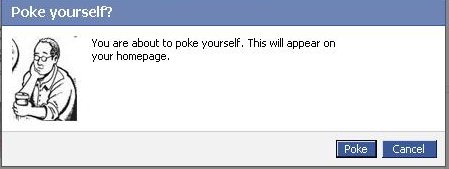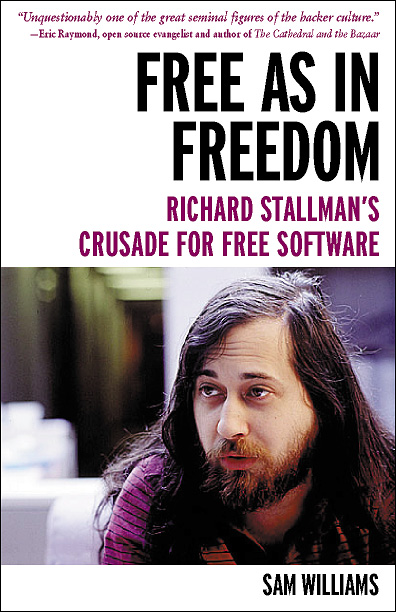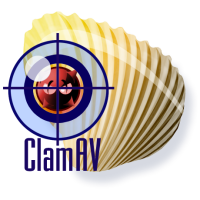Posts Tagged ‘impact’
Tuesday, December 13th, 2011 
Facebook and Youtube has become for just a few years a defacto standard service for 80% of computer users in our age.
This is true and it seems there is growing tendency for people to adopt new easy to use services and a boom in the social networks.
We’ve seen that with the fast adoption of the anti-human freedom program Skype , the own privacy breaching FaceBook as well as the people interests tracking service YouTube.
We’ve seen similar high adoption rates in earlier times as well with the already dying (if not dead MySpace), with the early yahoo mail boom etc and in even earlier times with the AltaVista search engine use.
However this time it appears Youtube and FaceBook are here to stay with us and become standard online services for longer times …
Many people who work in office all day staring in a computer screen as well as growing teenagers and practically anyone in the developed and the development world is using those services heavily for (in between 5 to 10 hours a day or more). The Software as a Service users spends approximately half of their time spend on the internet in Youtube or and Facebook.
Its true Youtube can be massively educative with this global database of videos on all kind of topics and in some cases facebook can be considered helpful in keeping in touch people or keeping a catalog of pictures easily accessible from everywhere, however when few services becomes more used and influential than other provided services on the internet this makes these services harmful to the communities and destroyes cultures. The concentration of most of the human popuplation who uses high technologies around few online services creates a big electronic monopoly. In other words the tendency, we see of amalgamation of businesses in real world (building of big malls and destroyment of small and middle sized shops is being observed in the Internet space.
Besides that Facebook and Youtube and Twitter are highly contrary to the true hacker spirit and creates a big harm for intellectuals and other kind of tight and technical community culture by creating one imaginative casual disco culture without any deepness of thought or spirit.
Its observable that most of the people that are heavily using those services are turning into (if not exaggerate) a brainless consumer zombies, a crowd of pathless people who watch videos and pictures and write meaningless commentaries all day long.
You have as a result a “unified dumbness” (dumbness which unifies people).
Even if we can accept the grown and fully formed character people are aware of the threats of using Youtube or Facebook, this is definitely not the case with the growing people which are still in a process of building personality and personal likings.
The harmful resuls that the so called Social networks create can be seen almost everywhere, most of the cafeterias I visit the bar tender uses facebook or youtube all da long, most of random people I see outside in a coffee or university or any public institution where internet access is available they are again in Youtube and Facebook. The result is people almost did not use the Net but just hang around in those few services wasting network bandwidth and loading networks and computer equipment and spending energy for nothing. The wasteful computer and Internet deepens the ecologic problems as energy is spend on nonsense and not goal oriented tasks but on “empty” false entertainment.
Hence the whole original idea of internet for many is changed and comes to few words ( Skype, Youtube, Facebook etc.
Besides that youngsters instead of reading some classical valuable books, are staring in the computer screen most of their cognitive time at only this few “services” and are learned to become more a consumers than self opinion thinkers and inventors.
I have not lately met any growing real thinking man. I’ve seen already by own experience the IQ level of younger generations than mine (I’m 28) is getting downer and downer. Where I see as a main cause the constant interaction with technology built in a way to restrict, a consumers technology so to say.
Facebook and Youtube puts in young and growing man’s mind, the wrong idea that they should be limited choice people always praising what is newest and brightest (without taking in consideration any sight effects). These services lead people to the idea that one should always be with the crowds and never have a solid own opinion or solid state on lifely matters. As said own opionion is highly mitigated especially in facebook where all young people try to look not what they really are but copy / paste some trendy buzz words, modern style or just copying the today’s hearoes of the day. This as one can imagine prevents a person of getting a strong unique self identity and preference on things.
Many of the older people or computer illiterates can hardly recognize the severe problems, as they’re not aware on the technical side of things and does not realize how much security compromising as well as binding the constant exposure to those online hives are.
The purpose of this small post is hence just a small attempt to try to raise up some awareness of the potential problems, we as society might face very soon if we continue to follow the latest buzz trends instead of stop for a moment have a profound think on what is the moral consequences of giving so much power on Internet medias like Facebook and Youtube? …
Tags: adoption rates, age, AltaVista, altavista search engine, amalgamation, computer screen, computer users, consumer, Culture, defacto, disco, downer, earlier times, Engine, facebook, freak, freedom, freedom program, global database, half, human freedom, impact, internet space, mail boom, malls, middle, monopoly, Myspace, negative impact, opinion, popuplation, quot, screen, Search, service users, Skype, social networks, software, technology, tendency, time, tru, yahoo mail, youtube
Posted in Everyday Life, Various | 7 Comments »
Saturday, December 3rd, 2011 
I’m currently reading Free as in Freedom (2.0) R. Stallman and the Free Software Revolution
The book includes a reference to Eric S. Raymond ‘s famous The Cathedral and the Bazaar which does makes a point about the important of Open Source . I’ve read the The Cathedral and the Bazaar paper some very long time ago (in my young days so to say) and hence I couldn’t resemble much of the document so I jumped in after the footnote in the FAIF book and decided to take a quick look on The Cathedral and the Bazaar once again to bring up some memories. I was stunned to find the paper is available in many formats but officially not included in PDF . Since i’m a GNU / Linux user I’ve never managed to get into the habit to read postscript documents which from modern day stand point are also already a bit of obsolete and therefore I found it as a wise idea to convert and mirror the POSTSCRIPT (PS) version of the document to PDF on www.pc-freak.net
Happily the ps2pdf command to convert the ps to pdf on my debian gnu / linux is really easy:
ps2pdf cathedral-and-the-bazaar-Eric_Raymond.ps Cathedral-and-the-bazaar-Eric_Raymond.pdf
ps2pdf is part of the ghostscript deb package, so if you can’t find the program you will need to have it installed with apt-get first.
By the way the Postscript file is easily readable using my default gnome PDF reader evince , but anyways I converted and mirrored the paper for all those windows users who might like to take a look at the document in PDF.
I’ve also made a mirror of the original Cathedral and the Bazaaar postscript document here , for all those who want to check out The PDF version of the Cathedral and the Bazaaar is for download here
Even though the “open source” movement is an interesting idea and it had some major impact on the development of some free software the idiology of open source which was very much influenced by this document is very weak compared to the philosophy Richard Stallman indcuded as of the great need of the software to be free.
To be honest looking back in time for a long time being a Linux user I did not make any distinguishment between “Free Software” concept and “Open Source”, even worser I considered to evangelize on Open Source not realizing that initially what attracted me to free software was the idiology of open source and not the real values on which ground free software is built.
This kind of miss understanding between perception of “open source” and “free software” I got and spread for years now I fully realize and I seem like when I red back then The Cathedral and the Bazaar document I didn’t looked any critical at the document but it had a major, I would say “bad” impact on my idiology on software for a long time. So for all those who had not checked it it’s worthy checking but only in case if one fully understands Richard Stallman’s concept of Free Software, without this understanding one can easily slip into the wrong believe (just like me back in thme) that open source is the same as free software. Even though open source can be free software it is not presumably that an open source is free software and that it guarantees that the published source will be free. But I’ll stop now as I slept away from my goal of the article to just log here how a convertion of postscript to pdf on gnu / linux is done.
Just to close up this article I warmly recommend on all people interested into hacking and the history of Free operating systems and Free software as FreeBSD and GNU / Linux the Free as in Freedom (2.0) book ! Its truly a remarkable and great inspirational reading for all people like me involved into free software realm of ICT.
Tags: bazaar, bit, Cathedral, Cathedral-and-the-bazaar, deb package, debian gnu, download, eric s raymond, evangelize, evince, file, Free, free as in freedom, free software revolution, freedom 2, ghostscript, GNU, gnu linux, impact, Linux, linux user, movement, need, Open, open source movement, package, philosophy, Postscript, postscript document, postscript documents, postscript files, postscript ps, ps version, ps2pdf, quot, reading, software, Source, stallman, time, windows users, wise idea
Posted in Everyday Life, FreeBSD, Linux, Various | 1 Comment »
Sunday, September 25th, 2011 I’ve had two domain names which were pointing to the same website content.
As one can read in any SEO guide around this is a really bad practice as search engines things automatically there is a duplicate site content and this has automatically a negative effect on the site pagerank.
To deal with situation where multiple domains are pointing to the same websites its suggested by many SEO specialists that a 301 redirect is created from all the domain websites to a single website domain which will open the actual website.
Making the 301 direct domain from the sample domain my-redirect-domain.com to www.mydomain.com can be done with a virtualhost dfefinition in either httpd.conf or with the respective file containing the domain virtualhost definitions:
Here is the exact VirtualHost code I use to make a 301 redirect.
<VirtualHost *>
ServerAdmin support@mydomain.com ServerName my-redirected-domain.com
ServerAlias my-redirected-domain.com www.my-redirected-domain.com
RewriteEngine on RewriteRule ^/(.*) http://www.mydomain.com/$1 [L,R=301]
</VirtualHost>
After placing the VirtualHost redirect, an apache redirect is required.
Further on when a Gooogle or Yahoo Bot visits the website and does any request to my-redirect-domain.com or www.my-redirect-domain.com , they will be redirected with a 301 reuturned code to www.mydomain.com
This kind of redirect however can have a negative impact on the Apache CPU use (performance), especially if the my-redirect-domain.com is high traffic domain. This is because the redirect is done with mod_rewrite.
Therefore it might be better on high traffic domains to create the mod_rewrite redirect by using a vhost like:
<VirtualHost *>
ServerAdmin support@mydomain.com
ServerName my-redirected-domain.com
Redirect 301 / http://www.mydomain.com/
</VirtualHost>
The downside of using the Apache 301 redirect capabilities like in the above example is that any passed domain urls like let’s say http://www.my-redirected-domain.com/support/ would not be 301 redirected to http://www.mydomain.com/support/ but instead the redirect will be done straight to http://www.mydomain.com/
Tags: apache, capabilities, com, conf, CPU, definitions, domain names, domain websites, downside, Gooogle, guide, httpd, impact, kind, lt, mydomain, nbsp, negative impact, pagerank, rewrite, RewriteEngine, RewriteRule, Search, search engines, seo specialists, ServerName, traffic domain, traffic domains, use, vhost, Virtualhost, website content, website domain, www, Yahoo
Posted in SEO, System Administration, Various, Web and CMS | 2 Comments »
Thursday, August 25th, 2011 Sysctl is a great way to optimize Linux. sysctl has a dozens of values which could drastically improve server networking and overall performance.
One of the many heplful variables to optimize the way the Linuz kernel works on busy servers is net.ipv4.ip_local_port_range .
The default sysctl setting for net.ipv4.ip_local_port_range on Debian, Ubuntu Fedora, RHEL, CentOS is:
net.ipv4.ip_local_port_range = 32768 65536
This means that the kernel and the corresponding server running services instructing the Linuz kernel open new port sockets can only open local ports in the range of 32768 – 65536 .
On a regular Desktop GNU/Linux machine or a not high iron server this settins is perfectly fine, however on a high scale servers the local port range in the interval of 32768-65536 might be insufficient at times, especially if there are programs which require binding of many local ports.
Therefore on a high load servers, generally it’s a good to raise the port range to be assigned by kernel to 8912 – 65536 , to do so the setting has to be changed like shown below:
linux:~# sysctl -w net.ipv4.ip_local_port_range = 8192 65536
...
If changing this setting on the server doesn’t show any negative impact on performance in few hours time or a day or even better decreases the server average load, it’s a good idea that it be added to sysctl.conf to load up the setting on next kernel boot.
linux:~# echo 'net.ipv4.ip_local_port_range' >> /etc/sysctl.conf
Enjoy 😉
Tags: boot linux, CentOS, conf, confEnjoy, dozens, fedora, gnu linux, good, idea, impact, interval, ip port, ipv, iron, kernel works, Linux, linux machine, negative impact, net, performance, port, ports, range, scale, scale servers, server networking, setting, sockets, sysctl, thoroughput, time, Ubuntu, variables, way
Posted in Linux, Linux and FreeBSD Desktop, System Administration | 1 Comment »
Friday, August 12th, 2011 
I’m responsible for some GNU/Linux servers which are shared hosting and therefore contain plenty of user accounts.
Every now and then our company servers gets suspended because of a Phishing websites, Spammers script kiddies and all the kind of abusers one can think of.
To mitigate the impact of the server existing unwanted users activities, I decided to use the Clamav Antivirus – open source virus scanner to look up for potentially dangerous files, stored Viruses, Spammer mailer scripts, kernel exploits etc.
The Hosting servers are running latest CentOS 5.5. Linux and fortunately CentOS is equipped with an RPM pre-packaged latest Clamav release which of the time of writting is ver. (0.97.2).
Installing Clamav on CentOS is a piece of cake and it comes to issuing:
[root@centos:/root]# yum -y install clamav
...
After the install is completed, I’ve used freshclam to update clamav virus definitions
[root@centos:/root]# freshclam
ClamAV update process started at Fri Aug 12 13:19:32 2011
main.cvd is up to date (version: 53, sigs: 846214, f-level: 53, builder: sven)
WARNING: getfile: daily-13357.cdiff not found on remote server (IP: 81.91.100.173)
WARNING: getpatch: Can't download daily-13357.cdiff from db.gb.clamav.net
WARNING: getfile: daily-13357.cdiff not found on remote server (IP: 163.1.3.8)
WARNING: getpatch: Can't download daily-13357.cdiff from db.gb.clamav.net
WARNING: getfile: daily-13357.cdiff not found on remote server (IP: 193.1.193.64)
WARNING: getpatch: Can't download daily-13357.cdiff from db.gb.clamav.net
WARNING: Incremental update failed, trying to download daily.cvd
Downloading daily.cvd [100%]
daily.cvd updated (version: 13431, sigs: 173670, f-level: 60, builder: arnaud)
Downloading bytecode.cvd [100%]
bytecode.cvd updated (version: 144, sigs: 41, f-level: 60, builder: edwin)
Database updated (1019925 signatures) from db.gb.clamav.net (IP: 217.135.32.99)
In my case the shared hosting hosted websites and FTP user files are stored in /home directory thus I further used clamscan in the following way to check report and log into file the scan results for our company hosted user content.
[root@centos:/root]# screen clamscan -r -i --heuristic-scan-precedence=yes --phishing-scan-urls=yes --phishing-cloak=yes --phishing-ssl=yes --scan-archive=no /home/ -l /var/log/clamscan.log
home/user1/mail/new/1313103706.H805502P12513.hosting,S=14295: Heuristics.Phishing.Email.SpoofedDomain FOUND/home/user1/mail/new/1313111001.H714629P29084.hosting,S=14260: Heuristics.Phishing.Email.SpoofedDomain FOUND/home/user1/mail/new/1305115464.H192447P14802.hosting,S=22663: Heuristics.Phishing.Email.SpoofedDomain FOUND/home/user1/mail/new/1311076363.H967421P17372.hosting,S=13114: Heuristics.Phishing.Email.SpoofedDomain FOUND/home/user1/mail/domain.com/infos/cur/859.hosting,S=8283:2,S: Heuristics.Phishing.Email.SSL-Spoof FOUND/home/user1/mail/domain.com/infos/cur/131.hosting,S=6935:2,S: Heuristics.Phishing.Email.SSL-Spoof FOUND
I prefer running the clamscan in a screen session, because it’s handier, if for example my ssh connection dies the screen session will preserve the clamscan cmd execution and I can attach later on to see how scan went.
clamscan of course is slower as it does not use Clamav antivirus daemon clamd , however I prefer running it without running the daemon, as having a permanently running clamd on the servers sometimes creates problems or hangs and it’s not really worthy to have it running since I’m intending to do a clamscan no more than once per month to see some potential users which might need to be suspended.
Also later on, after it finishes all possible problems are logged to /var/log/clamscan.log , so I can read the file report any time.
A good idea might also be to implement the above clamscan to be conducted, once per month via a cron job, though I’m still in doubt if it’s better to run it manually once per month to search for the malicious users content or it’s better to run it via cron schedule.
One possible pitfall with automating the above clamscan /home virus check up, might be the increased load it puts to the system. In some cases the Webserver and SQL server might be under a heavy load at the exactly same time the clamscan cron work is running, this might possible create severe issues for users websites, if it’s not monitored.
Thus I would probably go with running above clamscan manually each month and monitor the server performance.
However for people, who have “iron” system hardware and clamscan file scan is less likely to cause any issues, probably a cronjob would be fine. Here is sample cron job to run clamscan:
10 05 01 * * clamscan -r -i --heuristic-scan-precedence=yes --phishing-scan-urls=yes --phishing-cloak=yes --phishing-ssl=yes --scan-archive=no /home/ -l /var/log/clamscan.log >/dev/null 2>&1
I’m interested to hear if somebody already is using a clamscan to run on cron without issues, once I’m sure that running it on cron would not lead to server down-times, i’ll implement it via cron job.
Anyone having experience with running clamscan directory scan through crond? 🙂
Tags: antivirus, cake, center, CentOS, Clamav, clamav antivirus, company servers, dangerous files, exploits, gnu linux, hosting servers, impact, Installing, kernel, kind, linux servers, m center, mailer, open source, Phishing, piece, piece of cake, plenty, root, rpm, scanner, script kiddies, spammer, Spammers, time, unwanted files, unwanted users, ver, virus, virus scanner, Viruses, writting, yum
Posted in Linux, System Administration, Web and CMS | 2 Comments »
Monday, April 11th, 2011 
If you’re experiencing problems with maximising flash (let’s say youtube) videos on your Debian or Ubuntu or any other debian derivative.
You’re not the only one! I myself has often experienced the same annoying issue.
The flash fullscreen failures or slownesses are caused by flash player’s attempts to use directly your machine hardware, as Linux kernel is rather different than Windows and the guys from Macromedia are creating always a way more buggy port of flash for unix than it’s windows versions, it’s quite normal that the flash player is unable to properly address the computer hardware on Linux.
As i’m not programmer and I couldn’t exactly explain the cause for the fullscreen flash player mishaps, I’ll skip this and right give you the two command lines solution:
debian:~# mkdir /etc/adobe
debian:~# echo "OverrideGPUValidation = 1" >> /etc/adobe/mms.cfg
This should fix it for, you now just restart your Icedove (Firefox), Epiphany Opera or whatever browser you’re used to and launch some random video in youtube to test the solution, hopefully it should be okay 😉 But you never know with flash let’s just hope that very soon the open flash alternative gnash will be production ready and at last we the free software users will be freed from the evil “slavery” of adobe’s non-free flash player!
Though this tip is tested on Debian based Linux distributions it should most likely work same in all kind of other Linuxes.
The tip should also probably have effect in FreeBSD, though the location of the adobe directory and mms.cfg should probably be /usr/local/etc/adobe, I’ll be glad to hear from some FreeBSD user if including the OverrideGPUValidation = 1 flash option to mms.cfg like below:
# mkdir /usr/local/etc/adobe
# echo "OverrideGPUValidation = 1" >> /usr/local/etc/adobe/mms.cfg
would have an impact on any flash player fullscreen issues on FreeBSD and other BSD direvative OSes that run the linux-flash port.
Tags: Adobe, adobe flash, adobedebian, browser, BSD, buggy, cause, cfg, command, Computer, computer hardware, derivative, Flash, flash fullscreen, flash issues, flash option, free flash player, free software users, freebsd user, fullscreen flash, gnash, hardware, Icedove, impact, issue, kernel, linux distributions, linux flash, linuxes, location, machine hardware, macromedia, mms, option, oses, player, port, production, programmer, Resolving, right, slavery, software, solution, sudo, tip, Ubuntu, video, way, windows versions, work, youtube, youtube videos
Posted in Linux, Linux and FreeBSD Desktop, Linux Audio & Video | No Comments »








